This is my fifth annual research roundup about journal peer review. And we’re only averaging about one randomized trial a year. This…
The Value of 3 Degrees of Separation on Twitter
Update 2021: I wrote this post back in the Gamergate-affected Twitter era. While the issues here about degrees of separation are still current, my beliefs and personal practices around blocking accounts has changed. The issue of being blocked as a major “trophy” that draws a far larger trolling problem seems to have been a feature of that particular era. (I now block, and only rarely mute, as in the current environment, muting seems to widen the circle and quantity of bullying and misinforming tweets.)
Update 2022 (Feb 10): Many of the points in this post are still important. But a further critical point here about the importance of blocking, and never interacting with, bot trolling accounts:
The more interconnected our Twitter networks get, the more the distance between us and total strangers shrinks [PDF]. That’s not always a good thing.
Twitter is fabulous. There’s fun, camaraderie, fascinating people, and ideas you wouldn’t otherwise encounter. Victoria Costello shows how it can get articles noticed and advance scientific discussion.
Twitter is a channel of social influence, too, enabling new kinds of community action and social movement. The freedom and openness of Twitter enabled it to become a major highway for aggression as well.
If you’re not white and/or you’re female and young, odds are you and your peers will be on the receiving end of a lot of online abuse – and your sexual orientation can raise the odds, too [PDF]. Spend much time on Twitter, and no matter who you are, you’ll at least brush up against severe aggression yourself. And you will be a bystander.
A tidal wave of Twitter aggression can engulf a person or community. I wonder if they might be getting bigger and more frequent. Two of those came back-to-back in a community I was part of a couple of years ago. I tried to follow the general advice “Don’t feed the trolls” and block them. But that’s not as simple, or even as helpful, as it sounds.
In the last few weeks, another huge Twitter storm broke in my social circles – the furor over Tim Hunt’s remarks at a science journalism conference and then on the BBC. It took 6 weeks till major media interest in the UK petered out on this, with tens of thousands of comments and millions of readers and viewers. Kiran Garimella scooped up around 250,000 tweets using the relevant hashtags. It might have been bigger on Facebook, but there’s not as much data available to know for sure.
At first I reflexively followed “don’t feed/block”. But some of us started to talk strategy, with more questions than answers. I spent hours filtering and blocking the stream of ugliness. Enough time to start wondering.
I decided not to wall myself off, but to study the storm while in it instead. So I went back and gathered data, watched closely as the spirals of aggressive behavior came at me or others, explored subcultures many came from, and searched for literature and data.
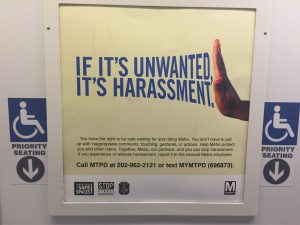 This photo is from a campaign running at the moment on the public transportation system I use. It feels symbolic of the push for social change – and the pushback from those for whom social change itself is unwanted.
This photo is from a campaign running at the moment on the public transportation system I use. It feels symbolic of the push for social change – and the pushback from those for whom social change itself is unwanted.
It’s been like that since movements for social justice and rights began to grow in the 1800s. Conditions and social forces align to enable progress in an area, and things get combustible for a while. Sooner or later, the pushback gains traction or inertia gets the upper hand, often for a long time. But ultimately, that doesn’t last any more than a period of rapid social progress does.
At the moment, we’re going through a period of intense pushback on expanding diversity and sensibilities. And it’s fueling online aggression.
Take the men’s rights activists (MRAs), for example, some of whom are propelling a lot of abuse at feminists on Twitter these days. That activism comes from subsets of a movement that emerged with the successes of the 1970s women’s movement, and specific consequences, like changes in divorce laws.
In 2011, Michael Kimmel said he thought the men’s rights movement might grow in the short term, “But it’s temporary. It won’t last”. Just over a year ago, longstanding tensions in the gamer community coalesced into the massive “Gamergate” conflict. Anti-feminist and misogynist subsets from that community and others are now also rallying each other into action against those of us they see as social justice warriors (SJWs). With new spotfires breaking out and joining up, it’s hard to tell whether online anti-feminism has peaked yet or not.
All sorts of events and factors affect which way reform tides turn. The ebbs and flows of investigative journalism are a good example. It was a major force at the beginning of the 20th century, peaking in 1906 and subsiding to its lowest point in 1950.
 Then television and Ed Murrow’s campaign against McCarthyism revived it. 60 Minutes and Watergate started off a new golden age in the 1970s.
Then television and Ed Murrow’s campaign against McCarthyism revived it. 60 Minutes and Watergate started off a new golden age in the 1970s.
David Protess and colleagues concluded that “competitive instabilities in the news media” were one of the prerequisites for the intensive eras of muckraking. Competitive media instabilities are definitely affecting our culture now.
Both journalism and feminism were central to the Tim Hunt Twitter storm, along with universities, and the consequences of expressing a culturally contentious opinion. Each of these topics was a magnet for the über-aggressive. Connie St Louis, a senior lecturer in journalism at the center of events, is a woman of color, and that was central to the worst of the abuse.
Journalism was pivotal to the aggression. There’s always a lot of resentment coming from non-dominant subcultures towards journalists who have so much more cultural power than they do. There’s deep rage from feeling journalists oversimplify their concerns to the point of caricature, willfully and uncritically accept the accounts of their opponents, judge all members by the behavior of the worst, and then demonize entire subcultures.
There is stereotyping, but there are demons, too. Whitney Phillips’ dissertation is about online trolling. In a post in The Atlantic, she makes an important distinction between the sport-like past-time of trolling – needling and looking for arguments and attention – that sprang from 1990s Internet culture, and those who are driven by racist, misogynist, and/or homophobic agendas. People who troll, Philips says, are weaponizing cultural sensitivities. But she estimated by 2011 it was hard to pick who was trolling and who was doing something worse.

This screenshot is the friendly and rewarding side of Twitter – the open public responses and conversations.
The names, avatars, banners, and bios that hover up at you can be funny, friendly, businesslike.
But they can also be an act of aggression, declaring hate or association with a subculture that has a reputation for mobbing, cruelty, and threats. You can stop having to see them by muting or blocking them, but you will still have seen at least some of the package of menacing and often violent imagery or language first. If there are a lot of them, it drains time and emotional band width. (You can mute directly from a tweet via the 3 dots next to the favorite button.)
If the attention of one turns to you, they could quickly bring a crowd with them. They can come at you like phantoms, faster than you can swat them away.
The imagery can be violent, pornographic, or literally villainous – avatars that are villains in games, for example. The visuals can be encoded, which is why some of the images can be so creepy even when apparently playful – like the sexually violent approaches by some to Gamergate iconography.
They might just troll or hurl abuse and go off to bother someone else. If it was only that, though – extreme characters with neon lit signs declaring their colors and no connecting path to your real community, life, and reputation – it would all be much simpler.
But firstly, even hard core enemies-of-people-like-you are not all so obvious. And many have a solid repertoire of ways to get their foot in the door. They get a lot of practice, so they can good at getting under people’s skin. As with aggression in real life, our socialization to be nice to others can be skillfully used to draw us in.
Secondly, it’s not just that there are wolves in sheep’s clothing. The schema below is how I came to see it. I think the happiest place to be on Twitter is 3 degrees of separation from hard core aggressive subcultures. And the people who are only 1 step removed, as well as those who are prepared to make common cause with them, extend the reach of mobbing and cyberbullying into our communities when a controversy hits.
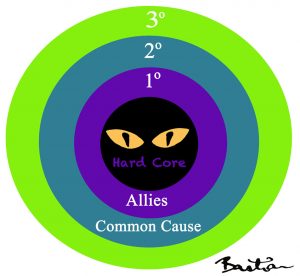
I now think those who have made enough common cause with aggressive subcultures to be seen by them as allies, are more of a problem than the hard core. They can have far more social and cultural power, so they’re not as easy to recognize or dust off. Some have media platforms.
People can pick up or embrace elements of the subcultures they’re allied with online. If they’re allied with this hard core, they’re often harassing or bullying. Others are more likely to defend them than people who are more obviously antisocial, too. It’s harder to avoid engagement or extricate yourself from it.
And as if they’re not bad enough themselves, they are an open channel to aggression from their followers and fans.
When people who are trusted in the community make common cause opportunistically with someone who’s only 1 degree of separation from hard core subcultures like this, aggression rattles quickly and chaotically through the community.
That kind of infiltration is a powerful tactic. It weaponized one side of the debate in this recent storm, coercing opponents into intimidated silence.
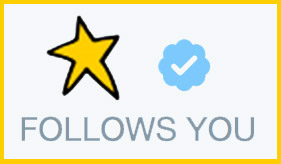 We call Twitter a social network. But a lot of what’s happening is parasocial – more or less one-sided, like the relationship we have with fictional characters and celebrities who don’t know us [PDF].
We call Twitter a social network. But a lot of what’s happening is parasocial – more or less one-sided, like the relationship we have with fictional characters and celebrities who don’t know us [PDF].
Followers, retweeting, favoriting, and engaging are social capital on Twitter, conferring more status to some people. Some others try to get their attention and acquire their status by imitating their behaviors. A lot of the abuse that I saw looked like that – people trying to get notice and approval by showing how nasty they can be.
That points to one of the problems with the “don’t feed/block” theory. It doesn’t take into enough account whose attention it is that people are after. Because blocking can be seen by the blocked, a block is a trophy to many. People can’t see if you have muted them instead. To block is itself a form of engagement, although it’s the only way to establish boundaries and stop them easily watching you.
There are autoblockers that you can sign up to now (Google sharing block lists), and you can share your own block lists. Those are still pretty crude mechanisms, though, blocking people who don’t need to be blocked, and maybe missing those you’ll encounter anyway.
“Don’t feed/block” focuses on the targets, and that’s clearly limited. Twitter is a lot about the audience, and bystander behavior matters. How others behave, could in turn affect how other bystanders behave. Then there are Twitter’s systems, harassers, and those who enable them. Whitney Philips again: “Until the conversation is directed towards the institutional incubators out of which trolling emerges – as opposed to just the trolls themselves – no ground will be gained, and no solutions reached”.
 At the root of the power here, too, is the fear they want us to feel. We need to both ensure that people understand how serious this is – yet take as much power (and thus reward) out of the activity as possible.
At the root of the power here, too, is the fear they want us to feel. We need to both ensure that people understand how serious this is – yet take as much power (and thus reward) out of the activity as possible.
I like to use numbers to help me get things into perspective. Take Gamergate, for example, one of the sources of anti-feminist, anti-journalist mega-aggression. Even at the height of it, the Gamergate Blocker, was reportedly blocking only 9,000 accounts in order to catch several hundred serious harassers.
In the last few weeks, I found myself in the thick of it because this post was being widely shared, and some were motivated to try to intimidate and smear me. It was fierce, but when I checked how many accounts I’d blocked or muted, it was fewer than I would have guessed. It felt like hundreds, but it was less than 200 – no picnic, in a short period of time, since I was also reading the tweets of those I’d blocked/muted to study it. But getting it into proportion helped. (Twitter doesn’t tally them up for you, but other services do – I used this.)
It also means support could have drowned them out easily, at minimal risk of exposure to the bystanders. The people who stepped up to say “leave her alone” were awesome. The tweets, messages, and emails of support I got were wonderful. The interactions didn’t even have to be directly related – any non-combatant friendly face popping up in my notifications was light against darkness.
I don’t think we can just passively wait for the “1 degree” people to move on of their own accord, once some in our community have enfolded them into our community. Sure they’ll move on eventually, but they’ll leave a trail of damage and distorted perceptions, empowered by easy wins and a coterie of new supporters. And they’ll be back quickly the next time there’s a diversity-related controversy.
We also need to focus attention on the successes (like this one) and the positive ways of overcoming online aggression, not just on the horror stories. We still don’t have a strong enough direct research basis to guide us as participants and bystanders though. However I found the body of work in school bullying helpful.
Elisa Cantone and colleagues concluded that interventions that address the bully, the target, the bystanders, and the environment are more likely to help. That can include reducing the social rewards bullies get from their audiences, supporting targets, and intervening to stop abuse.
In another review of school-based programs to reduce bullying and victimization, David Farrington and Maria Ttofi stress the value of drawing on knowledge about crime prevention to improve how we handle harassment. We need to think about the conditions which increase the behavior.
They point to defiance theory, for example – the conditions under which punishment increases crime. Doing nothing increases crime, but so too does being unfair in response. As John Braithwaite puts it, “Disrespect begets disrespect” [PDF]. I think that has direct relevance to the conflicts I was observing. Without saying there’s an equivalence, there was a lot of aggression on both sides. I don’t think we can get ourselves out of this only by treating others with respect. But a race to the bottom on all sides won’t help.
Twitter’s social structure is what makes it so valuable and rewarding. But its particular structure has challenges for social behavior embedded within it. It rewards showing off and social climbing. That’s not an appeal to the better side of our natures. T.S. Eliot captured that decades ago in his play, The Cocktail Party:
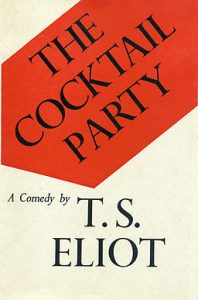
Edward: But I am obsessed by the thought of my own insignificance.
Reilly: Precisely. And I could make you feel important, and you would imagine it a marvellous cure;
And you would go on, doing such an amount of mischief as lay within your power – until you came to grief.
Half of the harm that is done in this world is due to people who want to feel important. They don’t mean to do harm – but the harm does not interest them. Or they do not see it, or they justify it because they are absorbed in the endless struggle to think well of themselves.
It’s not “a Twitter problem”. I agree with Phillips: it’s a cultural problem. And whether as bystanders or participants, we’re all involved.
This post started with a reference to research suggesting that the degrees of separation between people on Twitter are shortening [PDF]. If we keep getting better at spreading information more quickly, controversies could explode more quickly and more often. It will bring a sudden influx of people we don’t know. We need to sharpen our skills at recognizing and countering the destructive forces that ride in with them – and those who encourage them.
It’s amazing just how far some people are prepared to go to try to win an argument.
~~~~
[Update 7 September 2015] At the Festival of Dangerous Ideas in Sydney, there was a panel on Cybersexism, that recommended an active approach, with concrete tips and this from Clementine Ford: “…it gets easier. To be able to push through that and add your voice…it’s an incredible powerful thing”.
[Update: The original stated that you couldn’t mute or block an account without clicking on the account. I hadn’t noticed that you could do so directly from a tweet via the 3 dots. That sentence was changed on 20 October 2015.]
[Update 11 March 2016] Emily Temple-Wood spoke out about her response to the harassment her Wikipedia involvement brings – writing a new Wikipedia page on a female scientist every time she gets a harassing email. An inspiring story. I thought more of us should speak out about the harassment we get as Wikipedians, and documented an episode of my own on my personal website.
[Update April 4, 2021] Added note at top about my personal Twitter policy having changed.
Related on Absolutely Maybe:
On feminism and activism: The Outrage Factor – Then and Now
The Science Opinion Games: New Conversations, Same Old Voices?
As well as “The Outrage Factor”, I wrote these posts on the Tim Hunt furor: “Just” Joking? Sexist Talk in Science, and A Tim Hunt Timeline: Cutting a Path Through a Tangled Forest, with a follow-up, The “Un-Calm” After the Tim Hunt Storm.
Cyberbullying:
Researchers don’t yet have clear widely agreed definitions of cyberbullying and it’s mostly been studied in children, adolescents, young adults. It includes behaviors like flaming (fighting with angry and vulgar language), harassment (repeated mean, insulting messages), cyberstalking (which is intense, repetitive, and designed to incite fear), and denigration (including trying to damage people’s reputations).
There is a US government cyberbullying prevention website.
If you’re anxious or depressed, and would like to do something in addition to getting real-life support (and not spending a lot of time in Twitter for a while), check out this Absolutely Maybe post on websites that could help.
The cartoon at the top of this post, the 3 degrees diagram, and the mockup Twitter “verified account” are my own (CC-NC license). (More at Statistically Funny and on Tumblr.)
I took the photos of the Washington Post building, the Metro anti-harassment poster, and the Halloween decorated white picket fence in Washington DC. The Twitter screenshot is from the notifications on my personal Twitter account.
The cover from Faber & Faber’s first edition T.S. Eliot’s The Cocktail Party (1950) is via Wikimedia Commons.
* The thoughts Hilda Bastian expresses here at Absolutely Maybe are personal, and do not necessarily reflect the views of the National Institutes of Health or the U.S. Department of Health and Human Services.

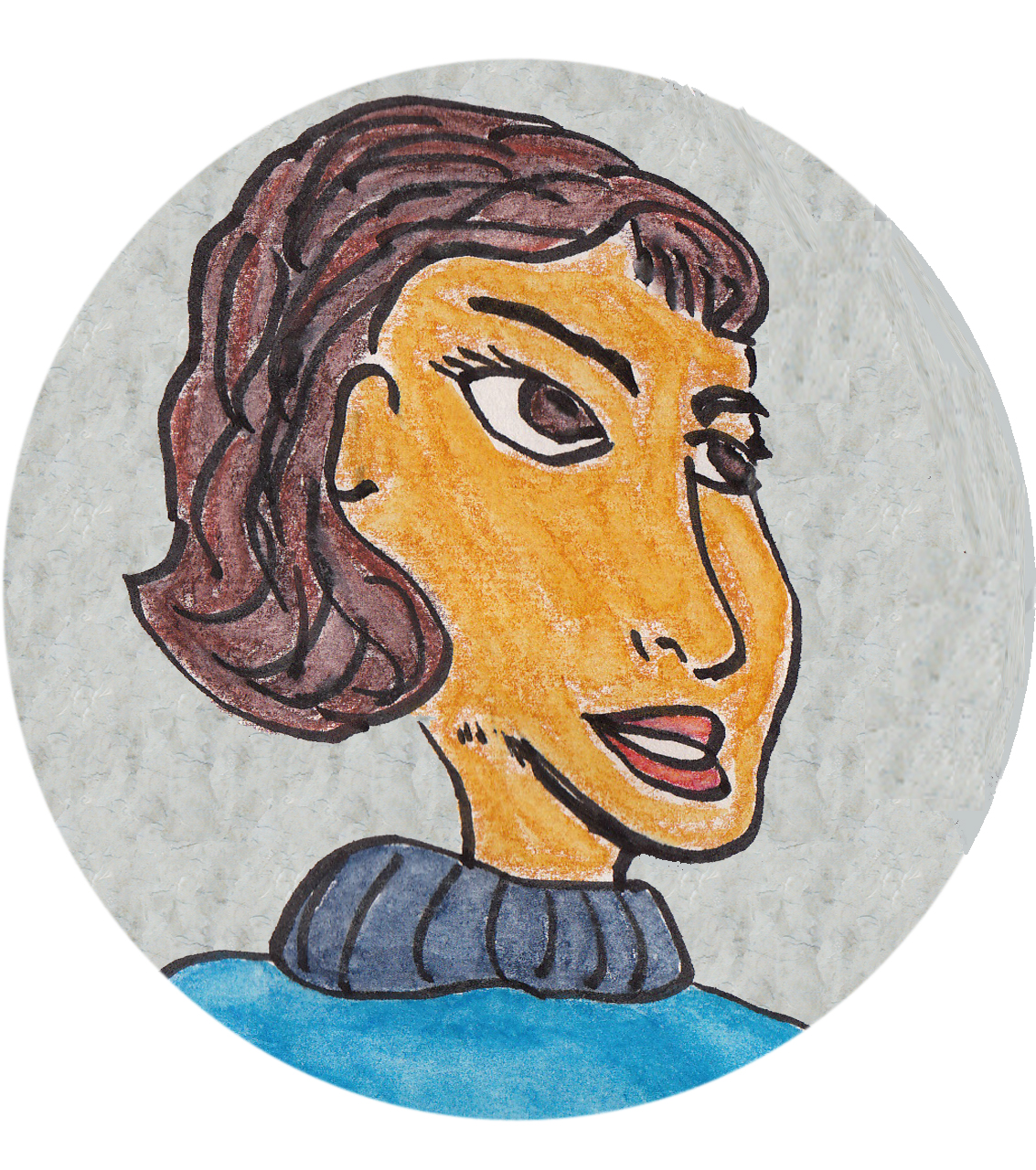
4chan is an anonymous message board, so no one actually knows who the artist who created the GamerGate icon Vivian James was or what went trough his mind at the time, but most likely this picture http://i.imgur.com/uVLAV0m.jpg was the inspiration, since a lot of people were asking what actually happened when the Polaris Game Jam failed.
But since the artist is unknown, likewise the meaning of the green/purple color scheme is also unknown.
Thanks for the comment, Hurin: the background I was referring to was what happened after the character was created and the way the imagery is used (not by everyone). To stick more closely to the link and what I meant, I changed “background of” to “approaches by some to”.
I wrote a blog post about myself, Richard Dawkins, Tim Hunt and Twitter. You might find it of interest.
http://mike.saunby.net/2015/09/tim-hunt-and-being-dawkinsed.html
Thanks for this article.
The parallels with anti-bullying research are interesting.
I personally would like to see such research focus on adult bullying – there seems to be an assumption that bullying is something that primarily happens in schools and that most grow out of it. I disagree. I believe schools are a key environment where most people learn a whole spectrum of violent/abusive behaviours that continue throughout adulthood. Young children then witness this behavior of adults and then imitate this behaviour in schools and other social arenas, thus perpetuating the cycle.
Breaking the cycle is a bit of a chicken-egg problem.
Thanks, Andrew. Yes, I agree. The child bullying literature does include assessments of later life (e.g. how many end up convicted of crimes), and preventing lifelong problems is part of the reason for investing in bullying prevention in young people. There’s literature in workplace harassment, but I didn’t find it specific enough for this behavior.